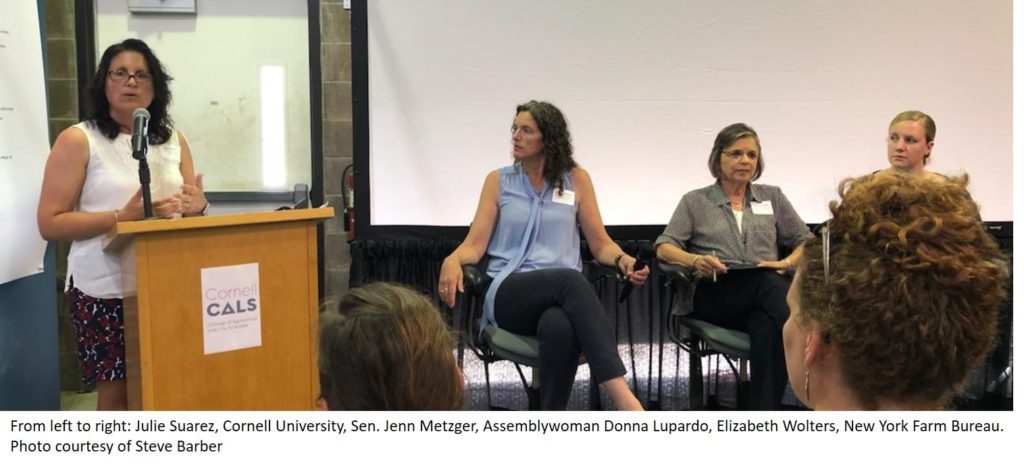This week Cornell University hosted an excellent event focusing on the topic of how thermochemical conversion could help NYS reach the ambitious goals set forth in the recently passed Climate Leadership & Community Protection Act (CLCPA). In short, the new law commits NY to meeting the carbon reduction goals suggested by the IPCC which are needed to keep warming to <2C. The law largely focuses on mitigation activities (e.g. 40% emission reductions by 2030; 85% reductions and net zero carbon by 2050), but also contains language supporting adaptation and climate resiliency initiatives.
It was pointed out that the law as currently written excludes pyrolysis, which was unfortunately lumped in with incineration under the ‘waste to energy’ label, from participating in the ‘alternative compliance mechanisms’ (ACM) which will be used to achieve net zero carbon in those situations where fossil fuels are not able to be completely eliminated (estimated at 15% of 1990 levels). It should be noted however, that all electricity generation (presumably including solar, wind, etc.) are excluded from ACMs. Renewably generated power is already baked into the planned reductions, so allowing them to also serve as ACMs would, in effect, be double counting their carbon impact and would not truly get NYS to net zero carbon. It seems likely that renewable energy will be incentivized in other ways apart from the ACM.
Legislative heavy hitters that participated in a policy panel including Senator Jen Metzer, Chair of the NYS Ag Committee and her counterpart Assemblywoman Donna Lupardo pointed out that the focus at this stage should be on the essence of the bill and that changes are almost always made to broad legislation like this. They also noted that it was likely many of those that crafted, lobbied and voted on the bill may not understand the differences between incineration and pyrolysis nor know much about biochar. Fortunately (or not) the law provides a 2-year window for many voices across the state to be heard and for the details on how best to achieve these goals to be hammered out.
Of perhaps more interest, at least to me, in the language concerning acceptable ACMs are these 3 notes (under section 75-0109 4.g) indicating that ACMs must:
- Be designed to provide a discernable benefit to the environment rather than to be the source
- Be located in the same county, and within 25 linear miles, of the source of the emissions, to the extent practicable;
- Enhance the conditions of the ecosystem or geographic area adversely affected
There are several more provisions (all written as “or” statements versus “and” statements so who knows how the selection rating system will end up) but overall I find this promising news for the biochar industry (note that I’m focusing here on the biochar end product and not energy generation via thermochemical conversion). Item ‘i’ could potentially exclude technologies such as direct air capture and carbon sequestration (DACCS), a technology which seems to have no discernable environmental benefits beyond reducing emissions from smokestacks. Biochar on the other hand, provides a wide variety of environmental benefits, many of which also support climate change adaptation and resiliency in addition to long-term carbon storage.
The focus on local ACMs and enhancing ecosystems also play in biochar’s favor. Considering that NYS has ~1,700 large scale generators of organic waste (i.e. >2,000 lbs/week), much of which could be converted into biochar, locating closed-loop biochar production facilities across the state is certainly feasible. It will also help NYS meet the goals of the recently passed organics mandate. Dairy farmers could carbonize manure, using the heat for pasteurization – further reducing the need for fossil fuel energy – and use the biochar first for bedding, then manure management and finally as a soil amendment. Municipalities could convert mountains of green waste, using heat for local needs and biochar for storm water management. These examples not only demonstrate that biochar solutions can be hyper local, they also enhance ecosystems.


